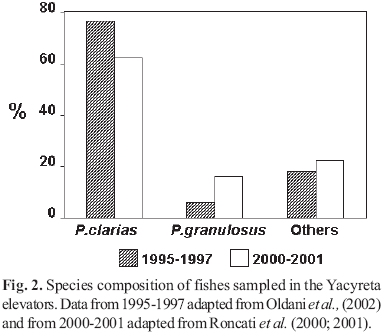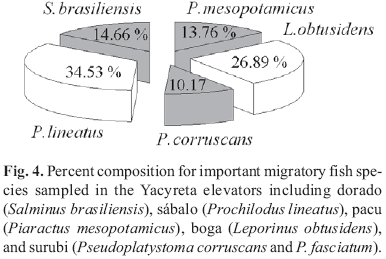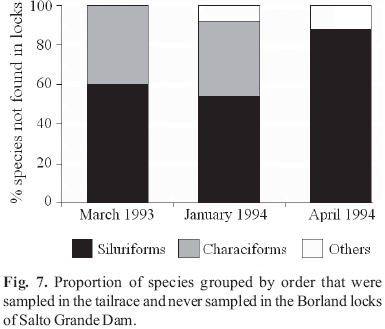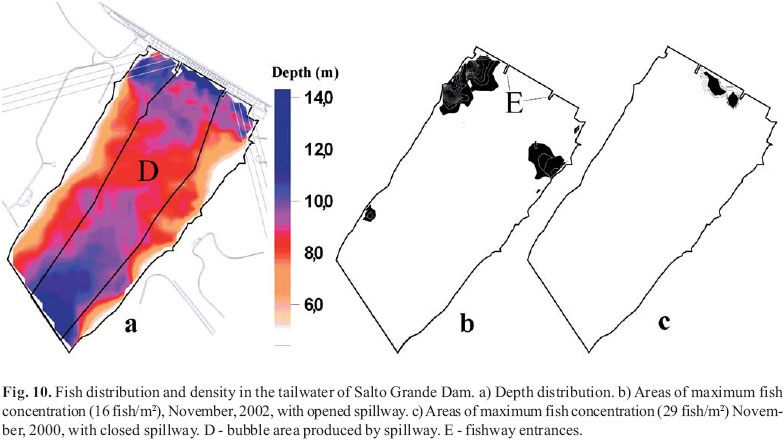Over 450 dams have been constructed in the upper Paraná River basin in Brazil during the past 40 years. River regulation by these dams is considered a primary factor in the reduction of fish diversity and depletion of migratory species. In contrast to the upper Paraná Basin, only two large dams (both with upstream fish passage) have been constructed in the lower La Plata River basin. Fishery managers in the lower basin are concerned that existing and planned dams will further deplete populations of migratory fish species that constitute important recreational and commercial fisheries as has occurred in the upper basin. We assessed the sustainability of fisheries in the lower basin in the face of increased river regulation by using literature information to describe the efficiency of the fish passage systems used to mitigate river regulation impacts on fisheries. Our analysis shows that fish passage systems at both lower basin dams, Yacyreta and Salto Grande, fail to transfer sufficient numbers of upstream migrants to sustain populations of migratory species. Fish passage efficiency of target species in the fish elevators at Yacyreta is less than 2%. Fish diversity in the fish elevators is low because about 85% of the fish belong to only three non-migratory species (Pimelodus maculatus, Oxydoras kneri and Rhinodoras dorbignyi). Large migratory species targeted for passage rarely comprise even 5 % of the fish number in the passage system. The two Borland locks at Salto Grande Dam cannot dependably pass large numbers of migratory species because passage efficiency is dependent upon interactions of powerhouse and spillway operation with tailrace elevations. Most species in the Borland system were either a small catfish (Parapimelodus valenciennis) or a engraulid (Lycengraulis grossidens). Again, the targeted migratory species were not abundant in the passage system. We conclude that existing fish passage technology in the lower basin is inadequate and that improved fish passage designs are required to conserve migratory species. These designs must be based on integrated information from geomorphology (habitat), natural fish behavior, fish swimming capabilities, and detailed population studies.
Non salmonid species; Migratory fish; Yacyreta Dam; Salto Grande Dam













